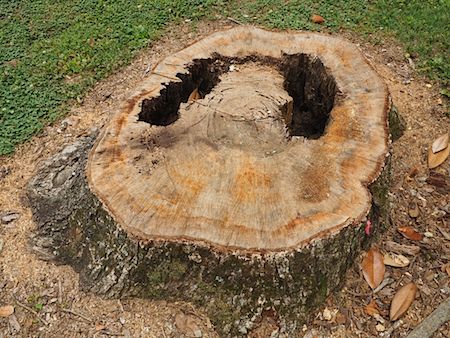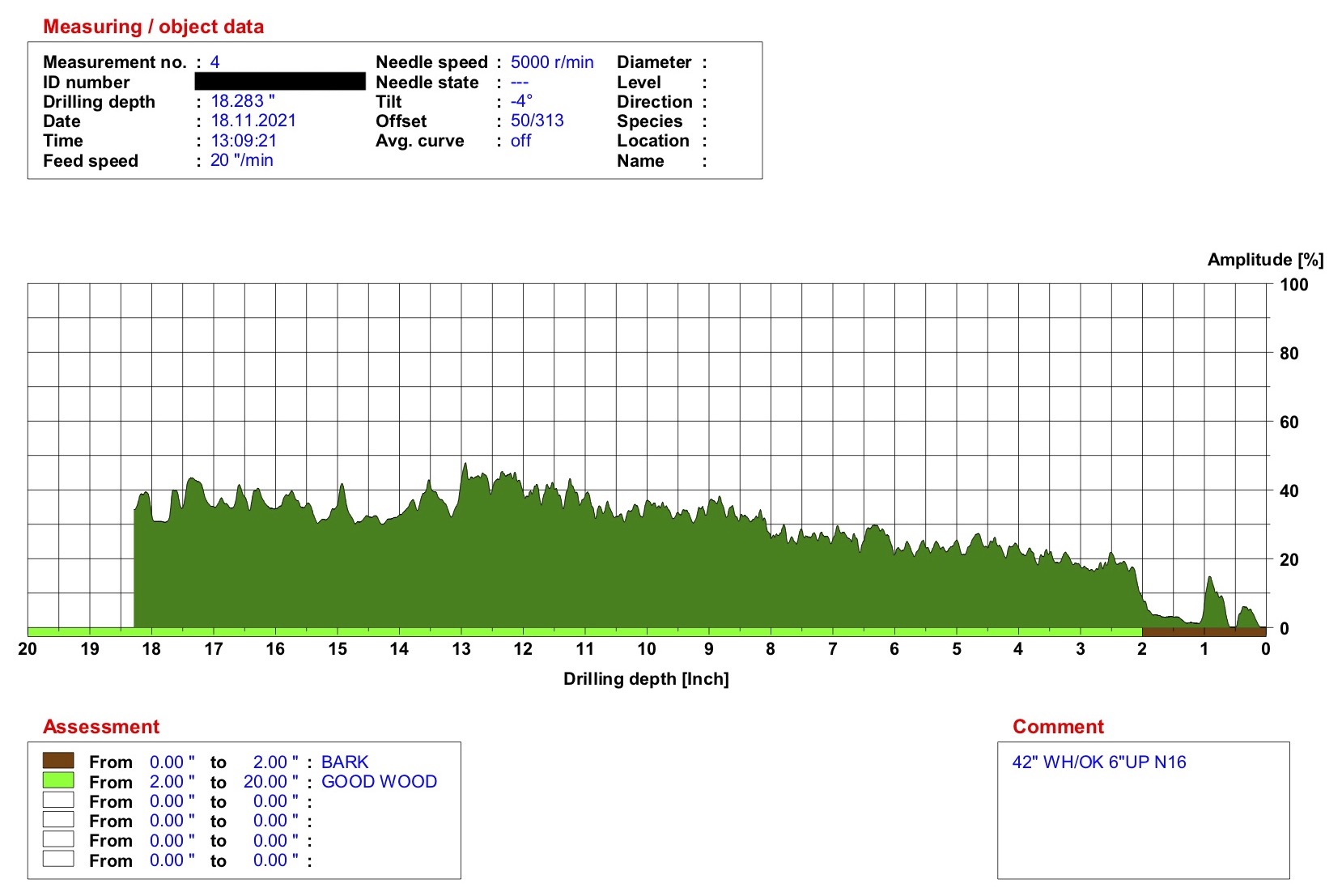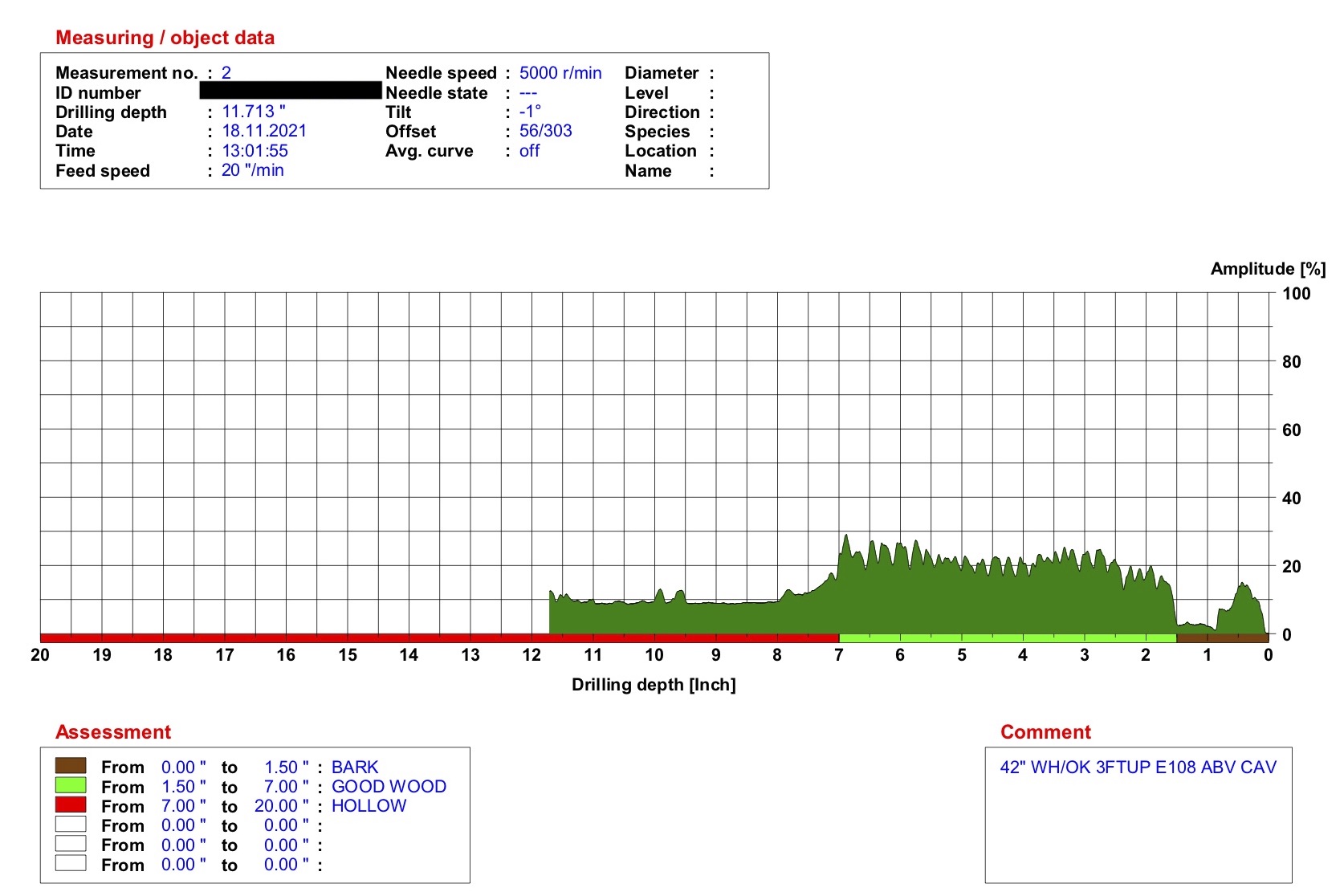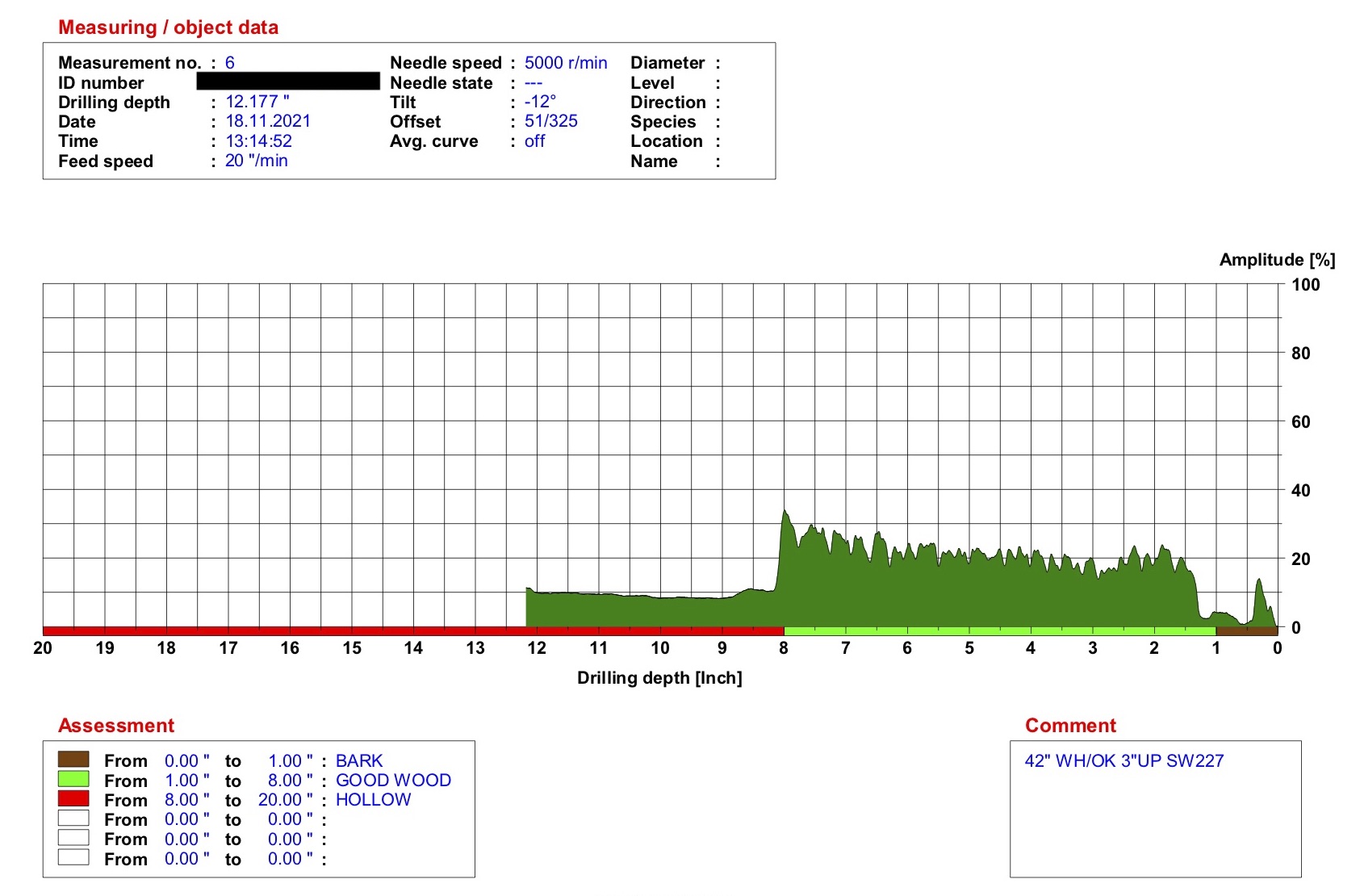 The Resistograph shows that there is decay in a tree where visual evidence is not available.Sometimes a tree develops problems that cause it to be unstable or weak. These problems may be visually obvious, such as a cavity or mushrooms at the base. They might be detected when the trunk or root flares (the part of the root coming off the trunk above ground) sound hollow when tapped with a mallet (lots of experience is so very helpful here!). To find out whether the tree is in danger of failure (falling over or breaking at a weak spot), it's very important to know if decay is present, and how extensive the decay is. The Resistograph® machine is critical for answering these questions.
The Resistograph shows that there is decay in a tree where visual evidence is not available.Sometimes a tree develops problems that cause it to be unstable or weak. These problems may be visually obvious, such as a cavity or mushrooms at the base. They might be detected when the trunk or root flares (the part of the root coming off the trunk above ground) sound hollow when tapped with a mallet (lots of experience is so very helpful here!). To find out whether the tree is in danger of failure (falling over or breaking at a weak spot), it's very important to know if decay is present, and how extensive the decay is. The Resistograph® machine is critical for answering these questions.
Resistograph testing does add to the cost of an inspection. We don't do it unless our arborist thinks there is a good reason for it. We never drill just to add to your bill, but rather to ensure that your tree is structurally sound. If the Resistograph shows significant decay inside a tree, it can save a homeowner thousands of dollars in repairs to your house or other structure -- and even your life! -- by telling you that the tree needs to be removed due to internal decay.
How It Works
The Resistograph uses a stainless steel drill bit that is 1/16 inch in diameter and about 19 inches long. When the drill bit is pushed into the tree by a gear in the machine, the wood’s resistance to it is recorded on a strip of paper or displayed on the machine's computer screen. It looks like an EKG. By analyzing the results, our arborist can tell whether the tree is hollow, decayed, or solid. A flat line indicates no resistance to the drill: a hollow or decayed area. A jagged line indicates resistance and stronger wood.
Does it Damage Trees?
Drilling a tree with a Resistograph is considered only slightly invasive. It causes no long-term damage. The hole which is left by the Resistograph's small-diameter drill bit can be easily sealed off by the tree during a couple of years' growth.
Where Do We Drill?
The most common areas that are drilled are the lower part of the trunk and where the roots come off the trunk (the root flares). If the tree leans, we will start by drilling underneath and opposite the lean -- the two most important tension points for the tree. More drillings are often required, depending on 1) the problem causing the need for drilling, 2) the size of the tree, and 3) the results of the first two drills. Also, occasionally the junction where a large branch meets the trunk higher up in the tree needs to be drilled if the inspector suspects decay there, such as when there is a cavity or mushrooms can be seen, or an animal such as a raccoon has been seen frequenting or nesting in the tree.
Test Results
Our arborists depend on the results of Resistograph testing to help you decide whether or not to condemn a tree. When we make a recommentation for taking a tree down, we want to be able to provide solid evidence for why removal is necessary. So even though performing this test adds to the cost of a tree inspection, doing it is far better than relying on guesswork.

With the computerized Resistograph, we can generate graphs like this one to be able to visualize and quantify the amount of decay inside a tree. This is the first drilling on the north side of a 42-inch DBH (diameter at breast height) white oak. The drilling shows no decay. So far so good!
Now look at the second and third drillings on the same tree.

Again, this is a 42" DBH white oak. This time, Peter drilled 3 feet up the trunk above a cavity on the east side of the tree. Reading from right to left, the graph shows that the trunk is solid (bark [brown] and good wood [green]) until 7 inches into the tree. At that point to the end (red), the tree is hollow.

Finally, having discovered extensive decay on the east side of the tree, Peter drilled 3 inches above ground level on the southwest side. This time he found (reading from right to left) that the trunk is solid (bark [brown] and good wood [green]) until 8 inches into the tree. At that point to the end (red), the tree is hollow.
The evidence shows that this white oak needs to be removed. The decay is too extensive for this large of a tree. Unfortunately, there is not enough solid wood to assure that it won't come down on its own.
Core Sampling is Not the Same as Resistograph TestingForesters use "core sampling" to determine a tree's rate of growth. Resistograph testing does not provide this information.
